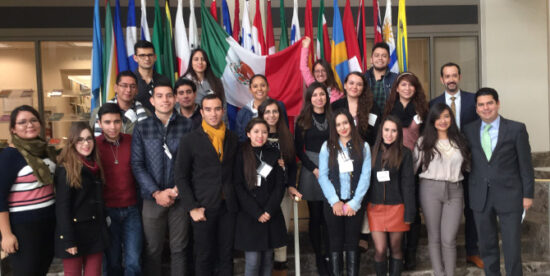
As the fall semester comes to a close, most students have settled into a routine within their school, balancing their studies work, activities, and community involvement. For international students who are studying in the U.S. and experiencing the country for the first time, the initial few months on campus are a period of immense adjustment. According to the 2015 Open Doors Report published by the International Institute of Education, nearly 970,000 international students enrolled at U.S. universities. Considering this is an all-time high, it is imperative that higher education institutions and community organizations support this ever growing population to integrate in their campus and community.
The opportunities for students to travel and experience the culture and community beyond the campus are one of the most beneficial aspects of studying abroad. Unfortunately, many international students who come to the U.S. don’t use their school breaks to gain such experience, because they feel the cost is too high or believe their time in the U.S. should be focused solely on education. According to the Open Doors Report, international students are often disinclined to develop long-term bonds with their host community because they see no potential for professional growth in the U.S. This might be a consequence of the additional challenge they face adapting to the American style of business, professional development and visa restrictions.
With nearly 970,000 international students studying at U.S. schools, what can universities and communities do to engage them in mutually beneficial ways?
In addition to their reluctance to travel around the U.S. during breaks, international students are also less likely to have opportunities to engage year round with their local campus community. As a Wall Street Journal article, dated March 2015, noted, universities are taking steps to encourage collaboration and friendship between domestic students and their international colleagues on campus. While this sort of engagement is helpful, it can have an even greater impact when combined with community engagement.
As the number of incoming international students increases, some U.S. universities are hard pressed to support programs which bridge the gap between local communities and the international student population. By encouraging these broader connections through programs like Meet America, hosted by Global Ties U.S. in partnership with the local community-based members of the Global Ties Network, universities can bolster their global impact and ensure their international students have the best experience possible without straining their on campus resources. The Meet America program is hosted in partnership with local community-based members within the Global Ties Network, who serve as global hubs within their communities. They have the resources to solidify connections between international students and their community counterparts, enriching both the international students’ experience here and the global sense of the community. When offered in partnership with universities, international student interaction with community partners serve as a forum for global education where both the students and those they interact with benefit tremendously. Ultimately, programs that engage both the campus and broader community in globally minded exchanges, benefit universities and prepare students to fill the need for a more internationally minded workforce.
The number of international students studying in the U.S. is growing quickly, so it is imperative that U.S. universities and communities take advantage of their presence. International students have much to offer. However, universities do not have to shoulder the burden of engaging them on their own. With a Network of organizations across the U.S., Global Ties U.S. and its members, through the Meet America program provide a win-win for all involved. The Meet America program offers international students the opportunity to travel and experience more of what the U.S. has to offer, but also allows them to benefit from professional development training with local resources and connecting with young professionals and students from the U.S. These skills and connections are instrumental here in the U.S. as well as in their home country. Without them, international students might otherwise return home to find themselves behind the professional development power curve set by their peers in the U.S.
By Ali Johnson, Global Ties U.S.
